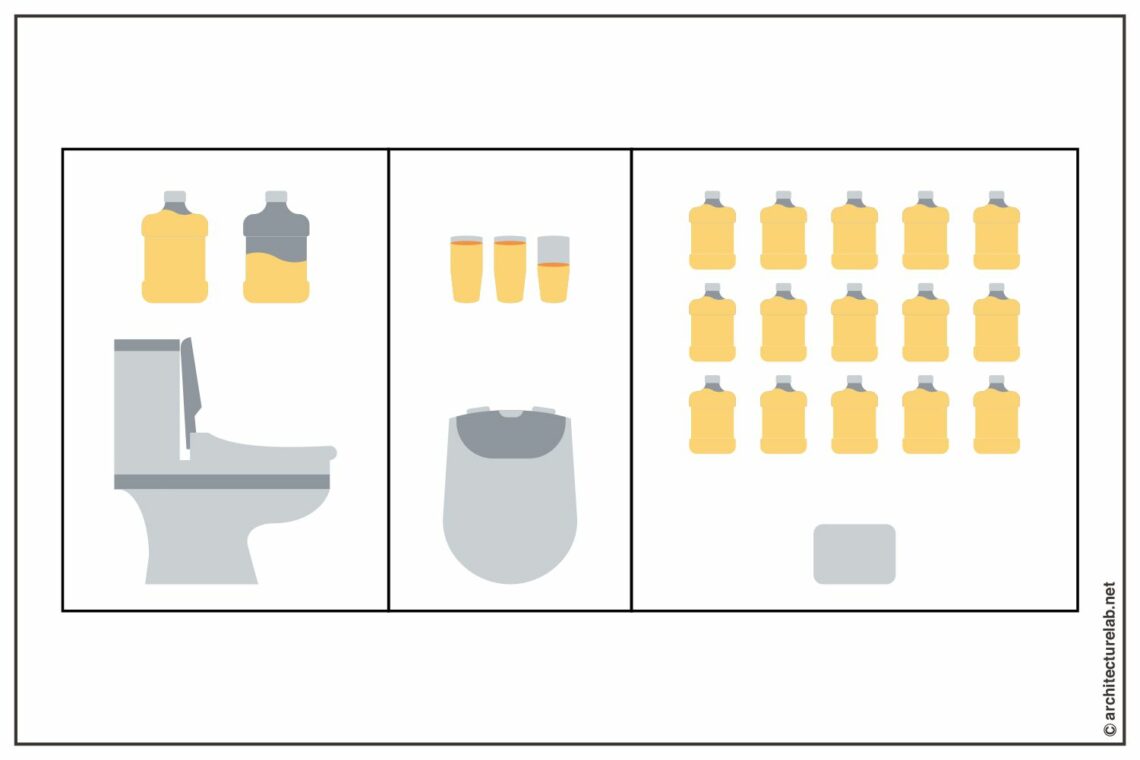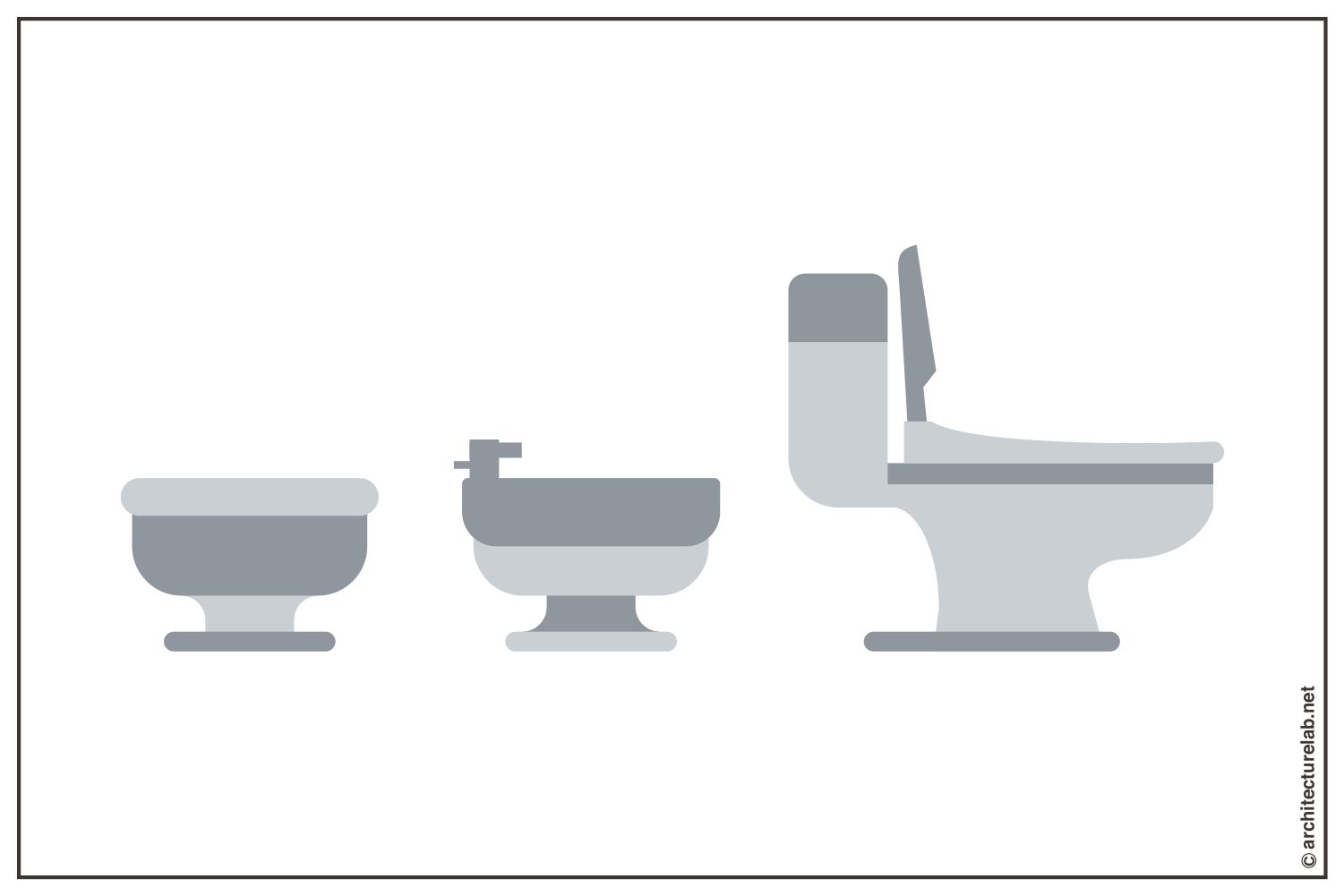The source of water that a bidet uses for spraying is often a concern for those on the fence about purchasing a bidet toilet seat.
Bidet toilet seats and attachments are connected to the same valve that supplies water to the toilet tank. At first glance, it may appear that bidets source water from the toilet bowl or tank, but this is quite far from the truth.
Let’s look at how the water supply line for a bidet works and how it avoids sourcing water from the toilet bowl or tank.
Where Does Bidet Water Come From?

The source of bidet water depends on the kind of bidet you’re using.
Bidet toilet seats draw water directly from the regular water supply. This is usually the same as the water sourced by a kitchen sink tap and bathroom faucet. The same source is also used by the toilet tank, but the water in the bidet never actually touches any part of the toilet.
Typically, bidet toilet seats and toilet tanks connect to the water supply line through a T-valve or a Y-connector. This separates the water, keeping one from flowing into the other and maintaining its cleanliness.
Freestanding bidets have access to water supply lines of their own, which separates them from the toilet entirely. As such, there are no concerns with water hygiene in modern bidet converter kits.
Additionally, certain bidet attachments and non-electric bidets operate through a different water supply line entirely. Much like freestanding bidets, this alleviates any hygiene concerns with a bidet attachment as well.
How Clean Is Bidet Water?
It’s better to compare the cleanliness of bidet water with that of the shower or bathroom sink. So long as the bidet nozzle remains clean, the water it sprays will remain clean as well. For this, many electronic bidet manufacturers include a self-cleaning system for the nozzle, which eliminates the need to do it yourself.
But if you still have concerns about the purity of bidet water, many bidet models include a water temperature control or filtration system. Both of these features kill the bacteria or filter the muck out before spraying water, which should alleviate any concerns with bidet water cleanliness.
Tip
Bidet water is only as clean as the water source itself. This means that if the water supply of your home is contaminated, the water your bidet seat uses will be dirty, and vice versa. In such cases, it’s better to contact either the water supply company or a plumber to address the issue.
How Sanitary Are Bidets?
While using toilet paper, the user may be left susceptible to getting bacteria on their hands. The remnants of bacteria, if not washed away properly, can lead to illnesses or infections. Moreover, lower-quality toilet paper tends to flake and tear off, which can further leave the user’s hands susceptible to bacteria.
In contrast, using a bidet toilet seat is more sanitary than any other traditional toiletry supplies like toilet paper. Simply cleansing and washing away excretory matter is preferable over wiping, even if the user wipes the moisture away with toilet paper afterward.
The amount of bacteria left on the user’s hands is quite low, particularly with warm water bidets, and this point is only emphasized with more advanced bidet seat models. More advanced models further reduce hand-to-toilet contact through features like warm air dryers to eliminate the need to use toilet paper entirely.
Bidets And Infection Risks
Infections can happen while using a bidet toilet seat, albeit quite rarely. This may occur if the germs from a contaminated bidet find their way into the urinary tract of women or cracks in the skin. Chiefly, this is due to the way the water flows from the nozzle and the number of people using the bidet toilet seat.
The water pressure and angle play a large role when assessing the risk of bidet water entering the urethra. If the nozzle is angled improperly or the water pressure is too high, the bidet seat may shoot the stream into the urinary tract.
Additionally, if a bidet is being shared among several individuals, the likelihood of its nozzle being contaminated increases. In such cases, users may also risk being exposed to certain pathogens while using a bidet toilet seat.
Thus, it’s important to keep the manufacturer’s recommendations in mind while operating a bidet. Be sure to keep the nozzle at a distance from your nether regions while using it, and regulate the pressure and angle per your preferences.
Tip
For women, it may be worth looking into a bidet with a filtration system to reduce infection risk even further. Bidet seats are meant to cleanse the outside of your body, after all.

Common Bidet Misconceptions
There are several misconceptions surrounding bidets that may prevent people from using them, despite research suggesting otherwise. This causes many of the advantages of bidets to be lost upon several people, which can be particularly unfortunate if they can benefit from it. After all, bidets can be installed in nearly all kinds of toilets.
Let’s clear up a few of the misconceptions surrounding bidets and shed light on what is true about them.
1. Bidets Waste Water
Bidet toilets use an insignificant amount of water per wash, which has a negligible effect on your monthly water bills.
This does not compare to the amount of water needed to flush toilet paper. Coupled with deforestation and production requirements, toilet paper has a significantly larger impact on water bills.
So, by switching to bidets, you will only be saving water and money on utility bills.
2. Showers Eliminate The Need To Use A Bidet
While showering does clean your nether regions, you wouldn’t do so every time after using the toilet. This does leave you susceptible to infections and bacteria.
So, the point of a bidet is to do so instantly and prevent discomfort as well. You will leave the toilet feeling cleaner than you would otherwise.
3. Bidet Water May Be Unsafe For People With Medical Conditions
Unless you have a specific medical condition that requires a high level of hygienic care, bidet water is completely safe to use. For those with conditions like hemorrhoids and mobility issues, bidet seats are outright preferable for their safety and convenience.
At the end of the day, you don’t need to worry about bidet safety, particularly if yours is a self-cleaning electronic bidet.
Is bidet water safe to use every day?
Provided that the water pressure and nozzle angles have been configured properly, using bidets every day is completely safe. Rare exceptions aside, bidet seats pose no threat to your health.
What are the disadvantages of a bidet?
Certain medical conditions aside, there are not many disadvantages to installing a bidet. Some of the cons of a bidet include the following:
- Small chance of infections in women
- May be difficult to operate for first-time users
- May cause a splash on clothing
How does a bidet impact the water bill?
You can expect the water bill to rise after switching to a bidet, but not by much. Compared to the amount of water that an average toilet flush uses (four gallons), a bidet only uses ⅛-th of a gallon per wash.
And if you’ve been flushing toilet paper down the toilet before switching to a bidet, you may even see a decrease in the utility bill.


